Themed collection Graphene Turns 15: Bio-implications and Bio-applications

Graphene oxide and carbon dots as broad-spectrum antimicrobial agents – a minireview
Complex antibacterial mechanisms of graphene oxide and carbon dots.
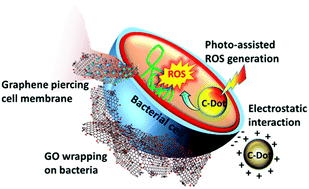
Nanoscale Horiz., 2019,4, 117-137
https://doi.org/10.1039/C8NH00174J
Graphene oxide touches blood: in vivo interactions of bio-coronated 2D materials
The impact of graphene oxide biomolecular corona on blood components.
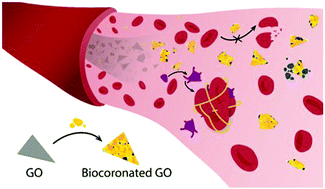
Nanoscale Horiz., 2019,4, 273-290
https://doi.org/10.1039/C8NH00318A
Occupational exposure to graphene based nanomaterials: risk assessment
The most significant routes associated with occupational exposure to graphene-based materials (GBMs) are the inhalation, cutaneous, ocular and oral ones. The manuscript presents a review of the in vivo toxicity data of GBMs after these exposure routes.
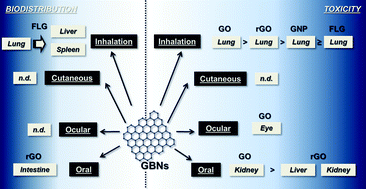
Nanoscale, 2018,10, 15894-15903
https://doi.org/10.1039/C8NR04950E
Three-dimensional graphene-based polymer nanocomposites: preparation, properties and applications
A schematic illustration of the fabrication strategies and applications of 3D-GPNCs is shown.
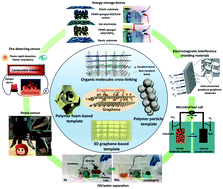
Nanoscale, 2018,10, 14788-14811
https://doi.org/10.1039/C8NR03044H
Stability, transport and ecosystem effects of graphene in water and soil environments
Graphene nanomaterials (GMs), such as graphene oxide (GO) and reduced graphene oxide (rGO), have been widely applied in various fields.
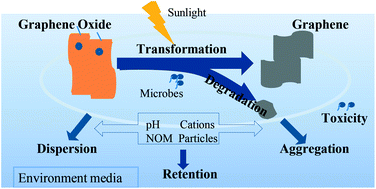
Nanoscale, 2017,9, 5370-5388
https://doi.org/10.1039/C6NR09931A
Graphene and its derivatives as versatile templates for materials synthesis and functional applications
Recent progress in the use of graphene and its derivatives as versatile templates for materials synthesis and functional applications has been elaborately demonstrated, and perspectives on potential future challenges and opportunities in this research area are discussed.
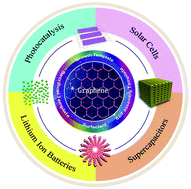
Nanoscale, 2017,9, 2398-2416
https://doi.org/10.1039/C6NR09439B
Science and technology roadmap for graphene, related two-dimensional crystals, and hybrid systems
We present the science and technology roadmap for graphene, related two-dimensional crystals, and hybrid systems, targeting an evolution in technology, that might lead to impacts and benefits reaching into most areas of society.
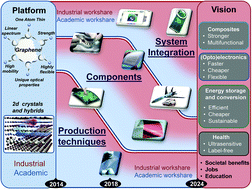
Nanoscale, 2015,7, 4598-4810
https://doi.org/10.1039/C4NR01600A
Graphene–silicon-on-insulator (GSOI) Schottky diode photodetectors
Graphene–silicon-on-insulator (GSOI) photodetectors for high-speed free space light detection.
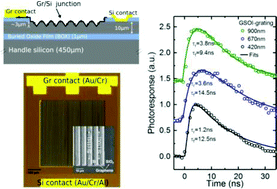
Nanoscale, 2018,10, 18926-18935
https://doi.org/10.1039/C8NR05285A
Graphene integrated circuits: new prospects towards receiver realisation
This work demonstrates a design approach which enables the fabrication of fully integrated radio frequency (RF) and millimetre-wave frequency direct-conversion graphene receivers by adapting the frontend architecture to exploit the state-of-the-art performance of the recently reported wafer-scale CVD metal–insulator–graphene (MIG) diodes.
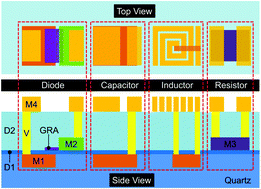
Nanoscale, 2018,10, 93-99
https://doi.org/10.1039/C7NR06871A
A novel artificial synapse with dual modes using bilayer graphene as the bottom electrode
We report a single device operated in two modes with enough potentiation states to mimic the synaptic learning behaviors.
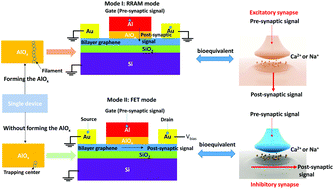
Nanoscale, 2017,9, 9275-9283
https://doi.org/10.1039/C7NR03106H
Laser-patterned functionalized CVD-graphene as highly transparent conductive electrodes for polymer solar cells
Polymer solar cells with an efficiency of 4.2% have been fabricated on properly functionalized and laser-patterned CVD-graphene used as electrode.
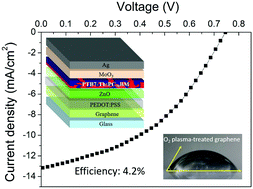
Nanoscale, 2017,9, 62-69
https://doi.org/10.1039/C6NR06156G
Graphene-based neuron encapsulation with controlled axonal outgrowth
We demonstrate the formation of a micro-roll for neuron encapsulation with a self-folding graphene/parylene-C bilayer film, and show the importance of using pores on the micro-roll to allow the encapsulated neurons to interact with the surroundings.
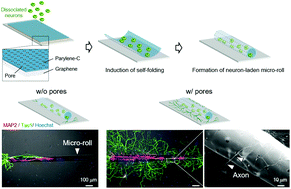
Nanoscale, 2019,11, 13249-13259
https://doi.org/10.1039/C9NR04165F
Few layer graphene does not affect the function and the autophagic activity of primary lymphocytes
Primary lymphocytes ensure their efficient function and maintenance through different mechanisms including autophagy. Few layer graphene does not affect either the viability and activation or the autophagic activity of B and T cells.
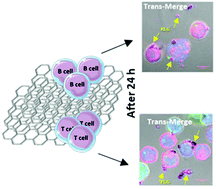
Nanoscale, 2019,11, 10493-10503
https://doi.org/10.1039/C9NR00846B
Spatio-temporal dynamics in graphene
The dynamics of optically excited carriers in graphene is resolved in time, momentum and space revealing the interplay of diffusion and scattering processes.
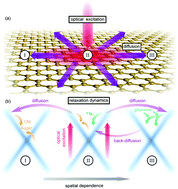
Nanoscale, 2019,11, 10017-10022
https://doi.org/10.1039/C9NR01714C
Graphene oxide prevents mycobacteria entry into macrophages through extracellular entrapment
GO trapping reduces mycobacteria entry in macrophages when the bacilli are in the external environment: a possible therapeutic strategy for tuberculosis.

Nanoscale Adv., 2019,1, 1421-1431
https://doi.org/10.1039/C8NA00413G
Graphene–Si CMOS oscillators
The ambipolarity of graphene is exploited to realize a new class of electronic oscillators by integrating a graphene field-effect transistor with Si CMOS logic.

Nanoscale, 2019,11, 3619-3625
https://doi.org/10.1039/C8NR07862A
Multi-layer graphene as a selective detector for future lung cancer biosensing platforms
Multilayer graphene can be used to detect volatile organic compounds, with enhanced selectivity and sensitivity through surface patterning.
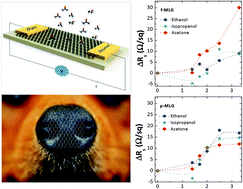
Nanoscale, 2019,11, 2476-2483
https://doi.org/10.1039/C8NR08405J
A silicon nitride waveguide-integrated chemical vapor deposited graphene photodetector with 38 GHz bandwidth
We demonstrate a high-speed chemical vapor deposited graphene-on-silicon nitride waveguide photodetector.
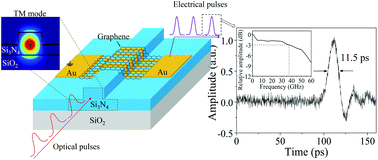
Nanoscale, 2018,10, 21851-21856
https://doi.org/10.1039/C8NR03345E
Peroxidase mimicking DNAzymes degrade graphene oxide
A DNAzyme made of guanine-rich DNA and hemin is capable of degrading graphene oxide sheets in the presence of hydrogen peroxide similarly to the natural enzyme horseradish peroxidase.
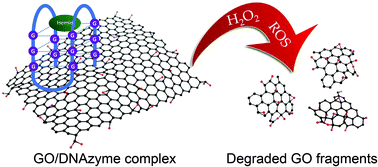
Nanoscale, 2018,10, 19316-19321
https://doi.org/10.1039/C8NR06535G
Graphene aerogels that withstand extreme compressive stress and strain
The superelastic aerogels can withstand a loading of 100 000 N for 60 min and retain their substantial elastic resilience. This loading corresponds to an ultimate compressive stress of approximately 1000 MPa and a strain of 99.8%.
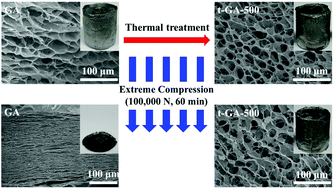
Nanoscale, 2018,10, 18291-18299
https://doi.org/10.1039/C8NR04824J
Stokes and anti-Stokes Raman scattering in mono- and bilayer graphene
The 2D mode of graphene exhibits significant frequency discrepancies between its Stokes and anti-Stokes components, making it possible to probe the nonlinear phonon dispersion of the iTO branch near K.
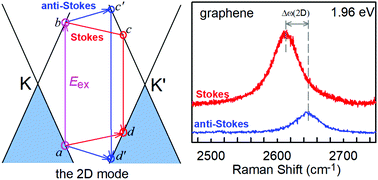
Nanoscale, 2018,10, 16138-16144
https://doi.org/10.1039/C8NR04554B
Graphene and graphene oxide induce ROS production in human HaCaT skin keratinocytes: the role of xanthine oxidase and NADH dehydrogenase
Graphene based nanomaterials induce a reactive oxygen species-mediated mitochondrial depolarization, caused by the activation of NADH dehydrogenase and xanthine oxidase.
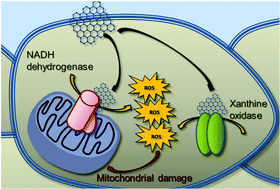
Nanoscale, 2018,10, 11820-11830
https://doi.org/10.1039/C8NR02933D
In vitro and environmental toxicity of reduced graphene oxide as an additive in automotive lubricants
A workflow for evaluation of human and environmental toxicity of nanosized bare graphene material intended as a motorcar lubricant nanoadditive.
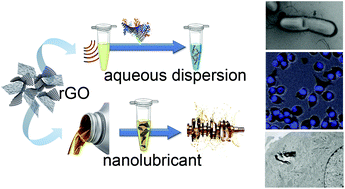
Nanoscale, 2018,10, 6539-6548
https://doi.org/10.1039/C7NR08597D
Graphene-coated polymer foams as tuneable impact sensors
Displaying a strain-dependent electrical response, the porous graphene-based nanocomposite ‘G-foam’ was found to be an effective pressure sensor and sensitive impact-sensing material.

Nanoscale, 2018,10, 5366-5375
https://doi.org/10.1039/C7NR09247D
Highly stretchable strain sensors with reduced graphene oxide sensing liquids for wearable electronics
Super-elastic strain sensors based on rGO/DI feature impressively high performance and can distinguish between compressive and tensile deformation.
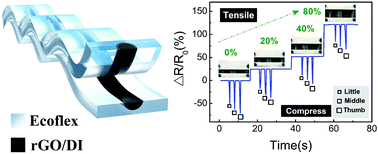
Nanoscale, 2018,10, 5264-5271
https://doi.org/10.1039/C7NR09022F
A multifunctional wearable sensor based on a graphene/inverse opal cellulose film for simultaneous, in situ monitoring of human motion and sweat
A multifunctional, wearable sensor based on a rGO/IOAC film has been developed and can perform simultaneous monitoring of human motions and sweat.
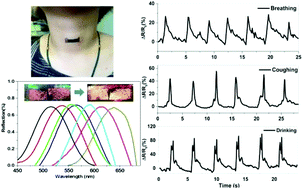
Nanoscale, 2018,10, 2090-2098
https://doi.org/10.1039/C7NR07225B
Graphene oxide-mediated Cas9/sgRNA delivery for efficient genome editing
GO-PEG-PEI nanocarrier, which was constructed for the delivery of high-molecular-weight Cas9/sgRNA complexes for executing endocytosis, endosomal escape, nuclear entry, and gene editing.
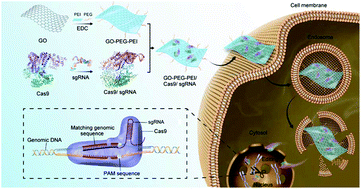
Nanoscale, 2018,10, 1063-1071
https://doi.org/10.1039/C7NR07999K
Graphene oxide is degraded by neutrophils and the degradation products are non-genotoxic
Graphene oxide (GO) undergoes neutrophil myeloperoxidase (MPO) dependent degradation and the degradation products are non-genotoxic for human lung cells.
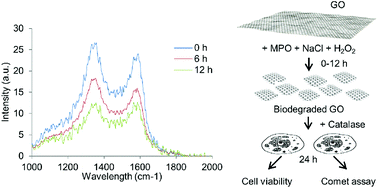
Nanoscale, 2018,10, 1180-1188
https://doi.org/10.1039/C7NR03552G
A graphene mesh as a hybrid electrode for foldable devices
A new hybrid electrode for foldable devices based on graphene mesh structures showed extreme flexibility without breakdown after 100 000 cycles.
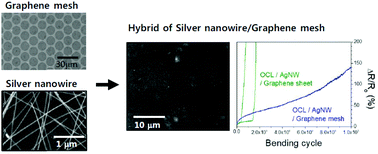
Nanoscale, 2018,10, 628-638
https://doi.org/10.1039/C7NR07086A
Self-assembled N-graphene nanohollows enabling ultrahigh energy density cathode for Li–S batteries
A novel structure enables Li–S batteries to display large-capacity, high-rate and long-life at an ultra-high areal sulfur loading.
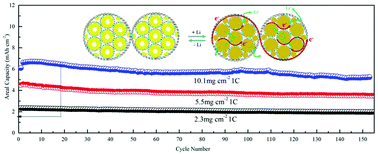
Nanoscale, 2018,10, 386-395
https://doi.org/10.1039/C7NR06731C
Functionalized graphene sheets for intracellular controlled release of therapeutic agents
The relationship between the functionalities of graphene-based nanocarriers and their intracellular drug release characteristics was carefully investigated in this paper.
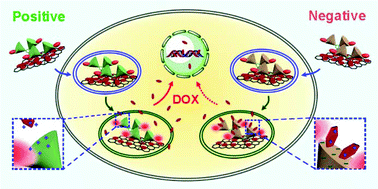
Nanoscale, 2017,9, 18931-18939
https://doi.org/10.1039/C7NR06588D
A small graphene oxide sheet/polyvinylidene fluoride bilayer actuator with large and rapid responses to multiple stimuli
A high-performance actuator should be able to deliver large-shape deformations, fast actuations and sensitive responses to multiple stimuli.
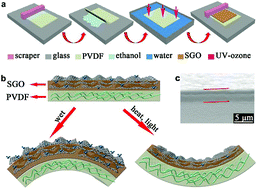
Nanoscale, 2017,9, 17465-17470
https://doi.org/10.1039/C7NR07116G
Efficient electro-optic modulation in low-loss graphene-plasmonic slot waveguides
Surface plasmon polaritons enable light concentration within subwavelength regions, and here we demonstrate efficient and compact graphene-plasmonic modulators fully integrated in the silicon-on-insulator platform.
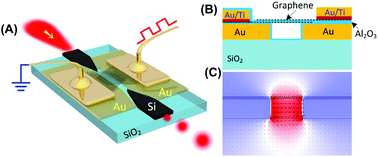
Nanoscale, 2017,9, 15576-15581
https://doi.org/10.1039/C7NR05994A
A tactile sensor using single layer graphene for surface texture recognition
A flexible tactile sensor using single layer graphene that can detect surface texture based on a single sensor architecture.
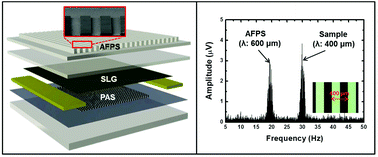
Nanoscale, 2017,9, 10248-10255
https://doi.org/10.1039/C7NR03748A
pH-Responsive fluorescent graphene quantum dots for fluorescence-guided cancer surgery and diagnosis
Novel pH-responsive fluorescent graphene quantum dots were synthesized for robust and universal solid tumor detection.
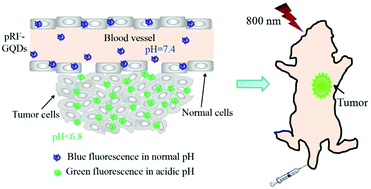
Nanoscale, 2017,9, 4928-4933
https://doi.org/10.1039/C7NR00888K
Comparison of reduction products from graphite oxide and graphene oxide for anode applications in lithium-ion batteries and sodium-ion batteries
A detailed comparison of the reduction products of graphite oxide and those of graphene oxide for Li+/Na+ storage has been discussed.

Nanoscale, 2017,9, 2585-2595
https://doi.org/10.1039/C6NR07650E
About this collection
To coincide with the 15th year since graphene was first reported, Andrea Ferrari (University of Cambridge and Nanoscale Associate Editor) has picked out his top articles that were recently published in the nanoscale journal family. Focusing specifically on the bio-implications and bio-applications of graphene, this Editor’s Choice collection highlights some of the key recent advances in the field.
Professor Dirk Guldi, Friedrich-Alexander-Universität Erlangen-Nürnberg, Germany and Editor-in-chief of Nanoscale and Nanoscale Advances: “The outstanding properties of graphene have been a jump start for cutting-edge research in the areas not only of physics, chemistry, materials science but also of life science. Hereby, graphene and its 2-dimensional analogues have transcended into a versatile and enabling platform for those multidisciplinary breakthroughs needed to lay the foundation for a myriad of applications.”
Professor Paolo Samori, Université de Strasbourg and Associate Editor for Nanoscale and Nanoscale Advances: “Over the last 15 years, graphene and related materials became the "golden" nanostructures for fundamental studies on their exceptional and physical and chemical properties. The interdisciplinary science of 2D materials has led to major breakthroughs paving the way towards disruptive technologies in opto-electronics, energy, sensing and biomedical applications.”
Andrea Ferrari is also the Science & Technology Officer and Management Panel Chair of the Graphene Flagship, which also celebrated graphene turning 15 this year.